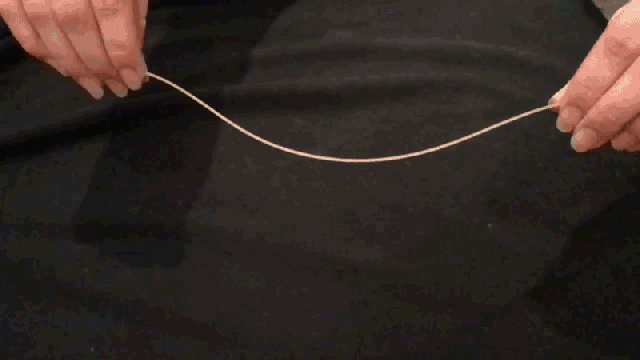Scientists have spent a lot more time breaking dry spaghetti noodles than you might think. For, if you can control cracked noodles, perhaps you can control the world.
Not exactly. But there’s a long history of studying how things break into pieces. Physicist Richard Feynman famously tested how dry spaghetti snapped when he brought its ends together—almost always into three or more pieces. Researchers are revisiting this experiment and noticed that, by adding a twist, they could stop the dry pasta from flying all over the place.
“The secret is that you have to twist it a fair amount,” graduate student Vishal Patil from MIT told Gizmodo. “The energy from the fracture gets divided into the twist.”
Given its connection to problematic famous physicist Feynman, others have tackled this research as well. Back in 2006, physicists Basile Audoly and Sébastien Neukirch won the Ig Nobel prize for their own experiments in which they isolated the reason why small, thin rods don’t just break in half. But Patil and the study’s first author, Ronald Heisser, a grad student at Cornell University, wanted to come up with a way to keep the pasta from breaking into more than two pieces.
The two snapped perhaps 350 pieces of spaghetti and filmed the results with a high-speed camera that could capture up to 1 million frames per second. The pasta fragmentation had several stages, beginning with a first fracture, followed by catastrophic failure, and then waves travelling down the noodle. The recoiling waves led to the secondary breaks and the noodle bits flying everywhere. But, by adding a twist larger than 250 degrees, they greatly increased the chance of cracking the spaghetti strands only in half, according to the paper published in the Proceedings of the National Academy of Sciences.
But who cares about how something breaks? “When you think of your cup shattering when it hits the ground or a building coming down, you lose a sense of control,” Heisser told Gizmodo. “Maybe there is something controllable, and people can think about fracture differently.” Small, thin rods are also rather ubiquitous in nature and in mechanics, from insect legs to twigs to carbon nanotubes. Understanding how they break is useful to engineers.
I asked if the two had tried their experiment on other types of pasta. Said Heisser: “Linguine is future research.”
[PNAS]
